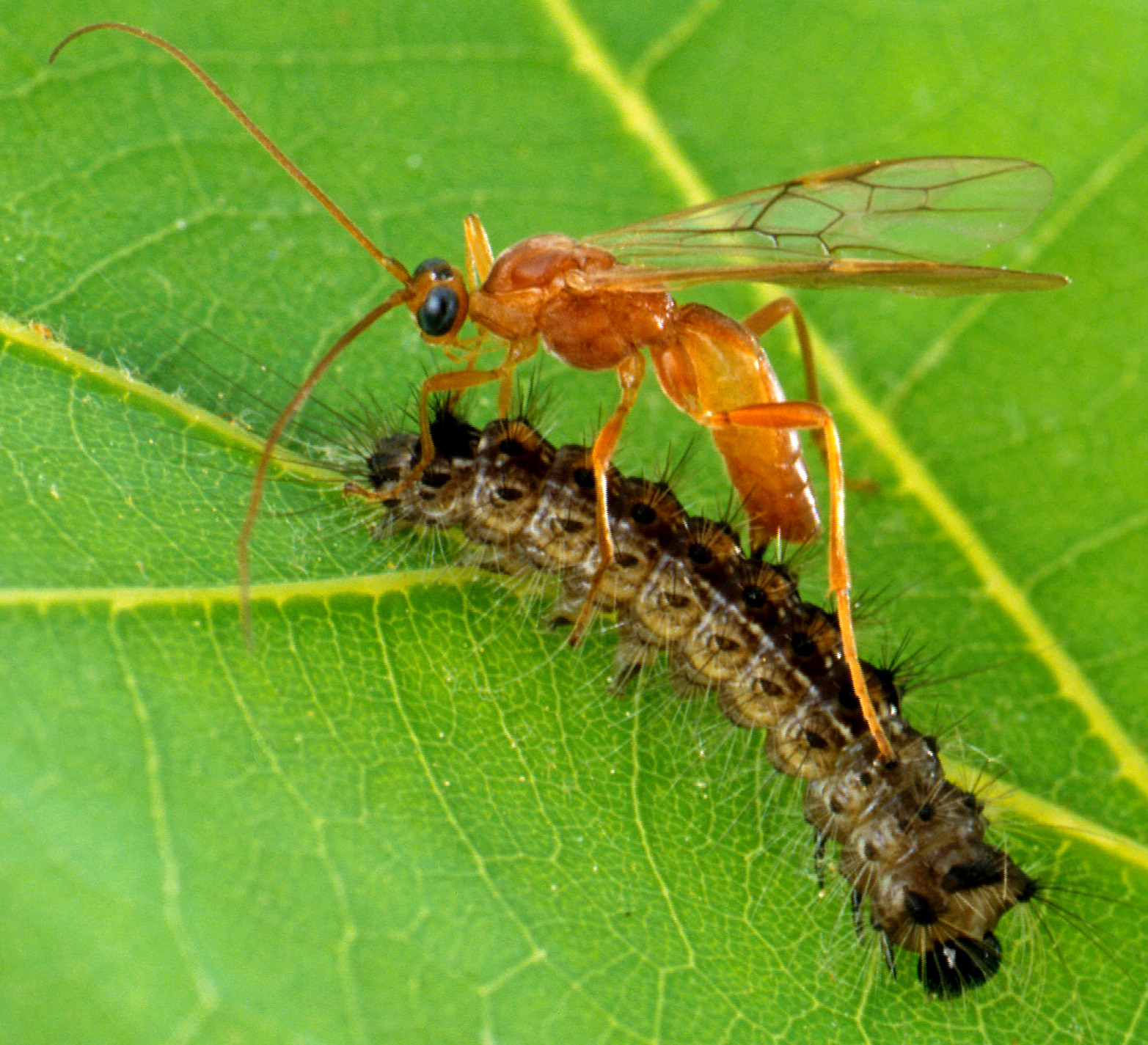Beneficial of the Month – Wasps ( Hymenoptera) Part I – Parasitic Wasps (Various Families)

Like tachinid flies, parasitic wasps behave as parasitoids, i.e., the adults are free-living, feeding mainly on nectar, while the egg and larva (and often the pupal stage) develop inside other insects, eventually killing them. Since parasitic wasps must overcome their hosts’ internal immune defenses, they are much more restricted in the range of insects that they can successfully attack than are predators. However, they are extremely efficient at finding their hosts, and can be very effective biological control agents. Parasitic wasps’ range in size from just a few millimeters (e.g., species that parasitize the eggs of other insects) to several centimeters in length. The females of species that attack concealed hosts (e.g., those living deep within plant tissues) often have a long ‘ovipositor’ (egg-laying tube) extending from the tip of the abdomen; although this is sometimes mistaken for a ‘stinger,’ these species are harmless to humans.

Beneficial of the Month material courtesy of NMSU ACES:
Pocket Guide to the Beneficial Insects of New Mexico
